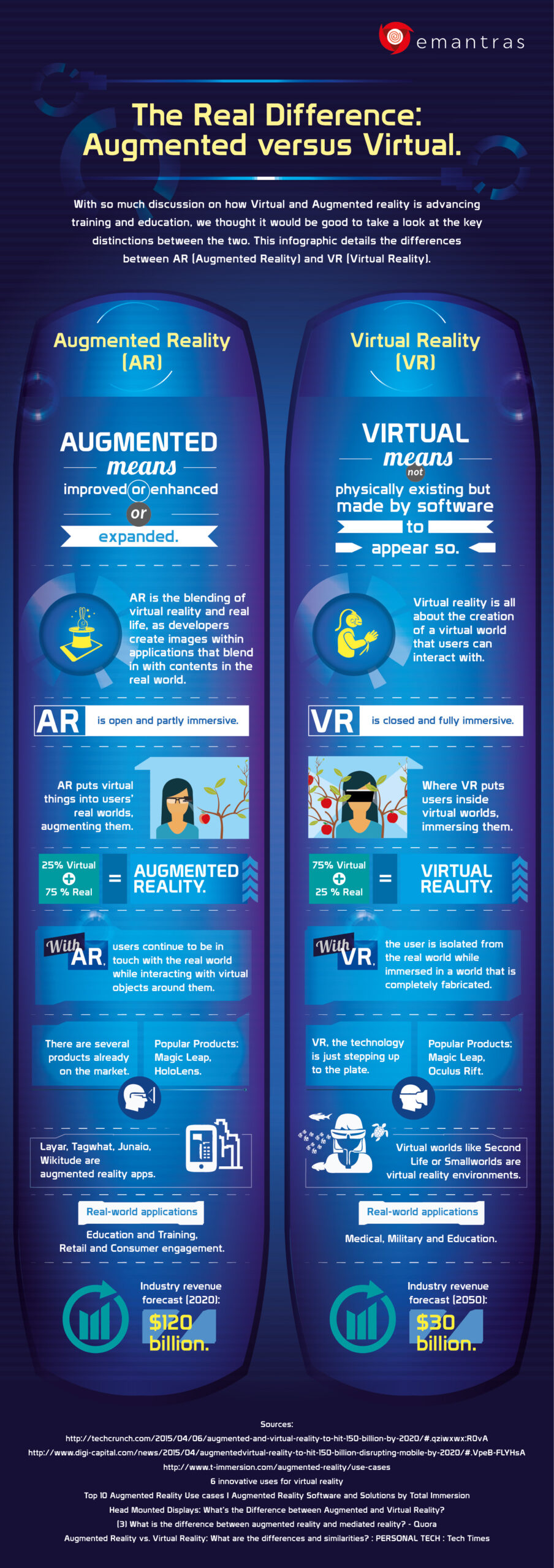Tag: training
-

Infographic – Virtual Football Training
Virtual Reality is being implemented in a variety of major industries from retail, to medicine, and even sports. There are currently sports-related VR apps on the market that allow the user to watch sporting events as if they are actually sitting courtside or on the sidelines; but what about using Virtual Reality to train and…
-

Infographic – VR in the Enterprise
Virtual Reality is a technology that immerses its users in a computer-generated 3D environment. Today, there are many other devices and technologies available that offer similar user experiences. Augmented Reality, for one, uses a wearable device to provide contextual information based on the user’s space at that moment. Mixed Reality overlays digital items to objects…
-

Infographic: Augmented Reality vs Virtual Reality
With both Augmented Reality and Virtual Reality growing in popularity, it is important to understand the difference between the two. Augmented Reality blends virtual reality with real life, putting virtual items into real worlds. AR consists of 25% virtual and 75% real environments, making it only partially immersive. Users are able to still be in…
-

Infographic – The Future of VR
Typically, when we think of Virtual Reality, entertainment is the first thing to come to mind—being able to play games, watch videos, and more on a VR device. However VR expands further than that; there are currently apps on the market that allow users to watch live sporting events or concerts in virtual reality, as if…
-

Infographic – VR and AR in Healthcare
Virtual Reality and Augmented Reality are both being used in a variety of industries, including education, sports, tourism, and even healthcare. The video game industry is projected to earn the highest revenue at $11.6 billion, but the healthcare industry is right behind them with $5.1 billion. VR and AR can be used for a variety…

